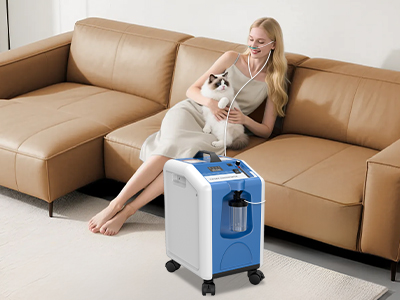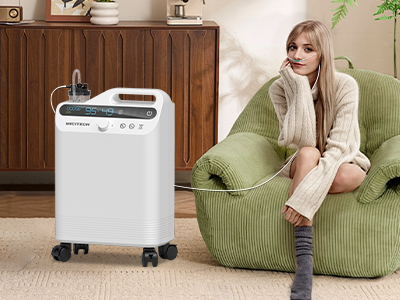28 Jul 2025
When you think of oxygen therapy, you probably imagine a pristine bubble of medical-grade air surrounding a patient in need. But here's the twist: that bubble lives in your home—and the home’s air might not be as fresh as it thinks it is. Yes, we’re looking at you, dusty drapes and lemon-scented chemical sprays.
If you’re relying on oxygen therapy, the quality of the surrounding air isn’t just background noise—it’s a headline act. Let’s dive into the dusty details of how indoor air quality affects oxygen therapy and what to do about it.

Why Indoor Air Quality Matters
Oxygen therapy doesn’t exist in a vacuum. Well, unless your kid decides to crawl inside the laundry basket again. The air your lungs encounter before the sweet, sweet oxygen kicks in is teeming with particulates, chemicals, and invisible irritants.
For those using supplemental oxygen, these air invaders can make therapy less effective or even harmful. Think of it like watering a plant with murky water—it still drinks, but it’s not exactly thriving.
Poor indoor air can:
Aggravate respiratory conditions like asthma, COPD, or chronic bronchitis.
Irritate airways, making oxygen delivery less efficient.
Introduce allergens that compete for attention like a toddler during a Zoom meeting.
Increase risk of infection, especially in immunocompromised individuals.
A pristine oxygen tank loses its sparkle when surrounded by polluted indoor air.
Common Indoor Pollutants That Interfere With Oxygen Therapy
You don’t need to live next to a factory to have air quality issues. Many offenders are already lounging on your throw pillows.
1. Dust and Dust Mites
Tiny, persistent, and positively rude. They live in carpets, couches, and that rug you swore you'd vacuum last week. Dust can clog up oxygen equipment and lungs alike.
2. Pet Dander
As much as we love our furry overlords, their microscopic skin flakes can stir up trouble in oxygen-rich environments. Hypoallergenic? That’s just marketing witchcraft.
3. Smoke
Whether from cigarettes, candles, or that overly enthusiastic stir-fry session, smoke particles are microscopic villains that compromise lung health and oxygen effectiveness.
4. Volatile Organic Compounds (VOCs)
These chemical gasses are emitted from paint, cleaning products, air fresheners, and sometimes even new furniture. They sound fancy but breathe like trouble.
5. Mold and Mildew
Damp corners are their playground. Mold spores can launch respiratory symptoms into orbit, especially when inhaled alongside therapeutic oxygen.
How Poor Air Quality Can Undermine Oxygen Therapy
Imagine you're trying to whisper words of encouragement to someone wearing noise-canceling headphones. That’s what poor air does to oxygen therapy—it muddles the message.
Effects Include:
Reduced oxygen absorption – inflamed or irritated airways make it harder for lungs to do their job.
Increased flare-ups – exposure to pollutants can trigger asthma attacks or COPD exacerbations.
More frequent hospital visits – no one wants to be on a first-name basis with the ER staff.
Lower quality of life – fatigue, headaches, coughing fits, and the joy of wheezing through a favorite movie.
Clean oxygen deserves clean air. Otherwise, it’s like serving gourmet soup in a dirty bowl.
Tools and Strategies for Cleaner Indoor Air
Cue the superhero montage music—it’s time to arm your home with weapons of purification.
Air Purifiers
Opt for HEPA filters with activated carbon. These suck up dust, dander, and even funky odors like a Dyson-powered black hole.
Dehumidifiers
Keep humidity levels between 30% and 50%. Mold loves moisture. Don’t invite it over.
Ventilation
Fresh air is underrated. Crack open windows when weather and pollution levels allow, or install exhaust fans to keep air moving and not just swirling.
Plants
Certain houseplants improve air quality—think peace lilies and spider plants—but too many can create a humidity jungle or harbor mold. Moderation is key.
Smart Monitors
Air quality monitors measure pollutants in real time, giving you a heads-up when your home starts acting like an invisible fog machine.

Oxygen Equipment Maintenance: The Unsung Hero
Oxygen therapy equipment isn’t immune to the perils of indoor air. It’s basically a sponge for gunk—if not cleaned regularly, it becomes a delivery system for the very things you’re trying to avoid.
Must-Dos:
Clean nasal cannulas, masks, and tubing regularly. Follow manufacturer instructions unless you enjoy surprise lung irritation.
Replace filters on concentrators. Think of it like brushing your teeth, but for your machine.
Wipe down machines weekly. Dust loves a flat surface and oxygen units are prime real estate.
Clean equipment + clean air = chef’s kiss for respiratory therapy.
Creating an Oxygen-Safe Zone at Home
Every oxygen user deserves their own sanctuary of breathability. Set aside a designated therapy area free of pollutants, clutter, and foot traffic.
Essentials:
Non-smoking, fragrance-free zone.
Air purifier on duty 24/7.
Comfortable chair or bed with breathable fabrics.
No open flames—seriously, even the “calm” aromatherapy candles.
Easy access to equipment and emergency supplies.
This is your lung spa. Treat it like a five-star oxygen resort.
Educating Family Members and Visitors.
Your home might be a fortress of filtered air, but guests often bring invisible baggage. Aunt Margaret’s Chanel No. 5 could be a VOC cocktail. Uncle Bill’s cigar... no comment.
Tactful Tips:
Use signage like “Oxygen Therapy in Use – Please Skip the Scents.”
Politely request outdoor smoking. Or better yet, outdoor smoking on someone else’s lawn.
Share a brief explanation—it’s about health, not hospitality snobbery.
Setting boundaries isn’t rude. It’s breathable.
Keywords: oxygen therapy
Originally published 28 Jul 2025, updated 28 Jul 2025.